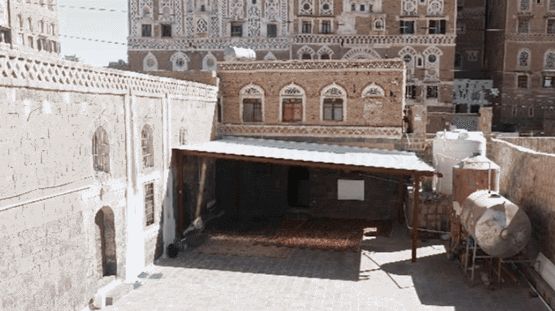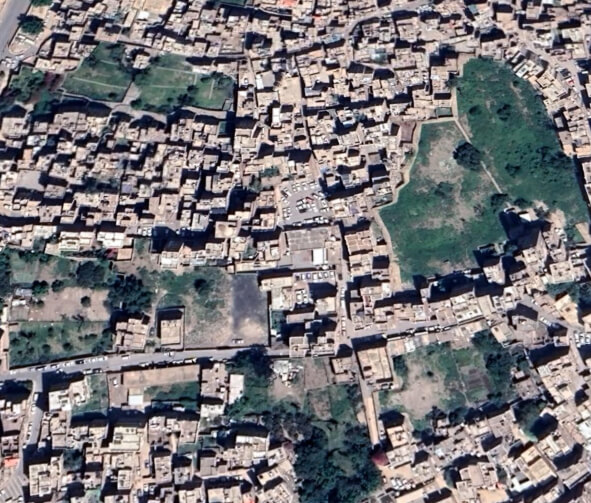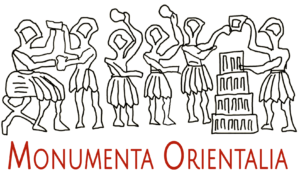
Al-Kharrāz Mosque – Old Ṣan‘ā’
مسجد الخراز- صنعاء القديم ة
Monument description
Historical context of the possible period for the construction of Al-Kharraz Mosque. This Mosque is one of the prominent and distinguished archaeological monuments in the Old City of Sana‘a. According to the sources, this Mosque was built by Muhammad bin Khalid bin Barmak in Sana‘a at Dar Al-Darb. It dates back to the 2nd century AH and was known as Al-Barmaki Mosque, which is the Mosque that is known today as the Suq Mosque. Al-Lasasin 183 AH. In the 4th century AH, the Mosque was reconstructed and named after a person named Arhab Al-Kharraz. The two sources mentioned that this person was sewing and embroidering beads and reconstructed it, so it was later called the Al-Kharraz Mosque after Al-Kharraz. Next to it was the beating house (minting money), which is located to the northwest of the Mosque, at a distance of 50 m.

Architectural and cultural value
Construction style and built date: The layout of the Mosque came in the style of mosques, which consist of a prayer hall with a flat roof supported by wooden beams resting directly on the capitals of stone columns and arches. The Mosque does not have a founding text at all, but according to the sources previously mentioned, it dates back between the 2nd and the 4th centuries AH.
Components of the Mosque: Prayer Hall, Minaret, Al-Manzilah, Berkah, Ablution Unit, Sabil and traditional baths.
- Justifications for intervention:
- 1 – Neglecting the competent authorities in carrying out periodic restoration work due to the lack of budgets for the repairs.
2 – Preserving the monument from disappearance and stopping the damage caused to the monument from expanding.
3 – Restoration of the damage to the mosque resulting from the flight strikes of the southern part of the old city of Sana’a.
4 – Contribute to the restoration of damaged monuments in a proper manner in order to keep Old Sana’a In the World Heritage List.
- Monument conditions:
- Damages resulting from the old building and time factors, wrong repairs, previous poor inappropriate restoration, and damages resulting from water leakage into the Mosque, and these damages include:
- 1. Cracking of Qadad in the water pool and surfaces
- 2. Cracks on the roof of the Prayer Hall
- 3. Moisture and salinity in the foundations
- 4. Collapse of some parts of the stone walls of the settlements
- 5. Presence of unconventional elements distorting the general landscape and historical value.
- Treatment:
- – Restoration and re-layer Al-Qudad in the affected places. Re-dressing and making a coat to drain rainwater on the northern facade
- – Reconstruct the dilapidated wal.
- – Stop longitudinal cracks
- – Treating damaged foundations and solving the problem of moisture
- – Treating roofs and preventing rainwater intrusion
- – Removing unconventional elements that distort the general landscape and historical value.

Countries








